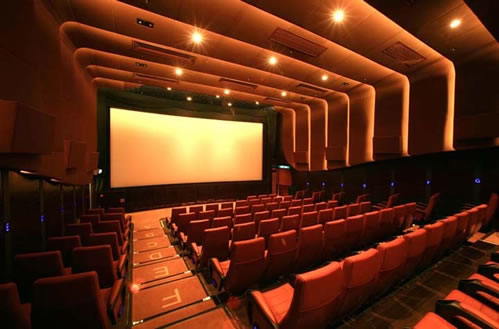
The rich may be building home entertainment centers like modern-day Zanucks, but the theater business isn’t concerned. People still enjoy a night out to the movies, despite the fact that in recent years, one by one, local movie theaters across the U.S. are being converted to digital projection, thus redefining the entire experience.
Seats have been replaced, the carpeting is new, satellite dishes sprout on rooftops like daffodils, and most significantly, out go the 35mm film projectors based on technology dating back to that early filmmaking milestone, The Great Train Robbery.
Since the dawn of Hollywood, what were once simply called “pictures” would arrive in 70-lbs cans shipped by air, truck and courier, today consuming fuel and up to $1 million per film in distribution costs. With digital projection, movies arrive by satellite or a paperback book-sized hard drive that’s downloaded into a central server and programmed into a network of digital projectors throughout the theater complex, sort of like a giant iPod. It takes only minutes to prepare a digital movie for showing, versus 1-2 hours to splice six reels of film onto a platter, thread it into a projector, then break it down for return shipment at the end of the run.
Thanks to digital, moviegoers see a brighter, crisper, clearer scratch-free image that does not deteriorate over time. The upgrade also means 3D films such as Avatar or Rio can be shown.
Digital’s plug-and-play flexibility allows theaters to become a center for special event programming such as the opera, ballet, pop concerts, live sports events and auctions, religious ceremonies, charity fund-raisers, and children’s G-rated film series. This allows theaters to fill more seats during off-peak periods with content that might otherwise not be available except in major cities.
It seems like a kind of paradise for advertisers. Opportunities to send out your message are more abundant than ever before, and the clearer, crisper platform means your ads will look better, too.
The problem is, this abundance of ad space has been filled up with (you guessed it) ads. Which means your message becomes a drop of water in a sea of loud, crazy blockbuster-esque ads. Kind of like TV.
Wasn’t the movie theater great when small businesses could put up their static ad and be one of three companies mixed in with trivia about Tom Hanks?
Alas, that era is long gone.
Just as still cameras have shunned film, and home VHS players have been banished to garage sales, it’s time to look at movie theaters in a whole new light – as local entertainment and event centers made possible by the digital revolution.
The advertising opportunities created by that revolution are whatever you make of them. If you can afford it, make sure you can cut through the noise and clutter that characterize so many pre-movie spots these days.
If you can’t, do what I do. Sit back and enjoy the buttered popcorn. They can’t take that away from us.